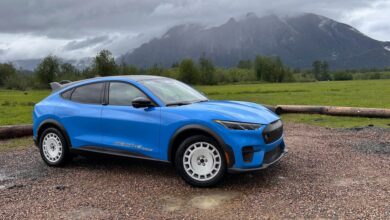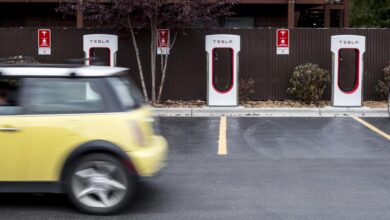The Eliica Was The Bonkers Eight-Wheeled 230-MPH Electric Limo You Never Knew You Wanted
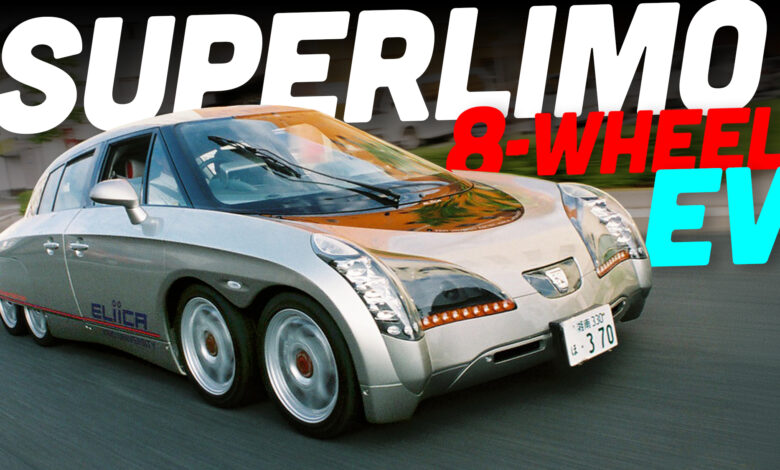
Every so often, the universe produces an almost mythically outrageous vehicle, something that feels like it came from the mind of Jason Torchinsky but is actually a running, driving car and not an elaborate hoax. Surely, nobody would build an eight-wheeled EV, surely nobody would take it to 230 mph around the Nardò Ring in Italy, and surely, all of this wouldn’t have happened before the first Tesla Model S rolled off the assembly line, right? Well, say hello to the Eliica, the absolutely insane electric limo where nearly everything you’ve heard about it is true.
It was as quick as a Porsche 911 Turbo. It did have absurd top end, eight-wheel-drive, and a wild arrangement of doors, and it wasn’t just intended as a one-off. While the Tesla Model S popularized the narrative of the electric super sedan, the Eliica started it, was the most advanced electric car in the universe, and then just vanished from popular perception.
![]()
Today, let’s examine this magnificent piece of Japanese engineering, the likes of which will probably never be seen again. After all, how many cars were designed from scratch to have eight wheels? There’s the OctoAuto, the Eliica, its predecessor, and not much else.
Meet Kaz

Nobody just produces an insanely fast eight-wheeled executive sedan out of nowhere, so what’s the backstory on this thing? It all starts with a little university project called KAZ, an acronym for Keio Advanced Zero-emission vehicle. This absolutely bonkers vehicle rolled out of Keio University shortly after the turn of the new millennium.
Guess what? It was even weirder than the Eliica. Instead of being a grand sedan, it was a minivan with a rear-facing second row, it measured in at nearly 22 feet long, tipped the scales at 6,570 pounds, and featured double-wishbone hydropneumatic suspension at all, um, eight corners. Alright, maybe corners was the wrong word there.

Yes, this was also an eight-wheeled vehicle, because it used a hub motor in each wheel, and eight-wheel-drive was exactly how KAZ managed to crank out 590 horsepower and hit a top speed of 193.3 mph at Nardò in 2002. Granted, a drag coefficient of 0.30 certainly helped in achieving that last figure. Crazier still? This contraption also featured six-wheel steering, and Popular Science reported that KAZ had a highway cruising range of nearly 200 miles in 2002. However, KAZ was only a stepping stone, because even in 2003, project lead Dr. Hiroshi Shimizu had a good idea for a follow-up. As per Popular Science:
What’s next? You can’t accuse Shimizu of not listening to what the marketplace is trying to tell him. His next project is swimming in sex appeal–a luxury sports car, a la Porsche 911, with which he expects to set a world electric-vehicle record of around 250 mph.
We’re talking biblical figures for something that would launch in the mid-aughts, but the end result was stranger than anyone could possibly imagine. Well, anyone who wasn’t on the team.
Let’s Get Even Weirder

Clearly, KAZ wasn’t outrageous enough for Dr. Shimizu and his team, so the next act was the Eliica, a shortening of Electric Lithium-Ion Car. Relatively plain name, relatively insane car. Once again, an eight-wheeled layout was employed, only with even more powerful motors to churn out 640 horsepower, or 80 horsepower per wheel. While this feels a bit like boy math, it actually worked, and the result was 229.9 mph at Nardò, as confirmed by Porsche Engineering, keepers of the test track itself. While not quite the 250 mph the team was aiming for, it’s still an absurd figure for the time. Keep in mind, it hit that speed in 2004, years before the Tesla Roadster entered production, and it didn’t come at the expense of acceleration. After all, zero-to-60 mph in four seconds is still plenty quick, just like how 186 miles of range isn’t bad for 2004. However, the Eliica wasn’t some wild hypercar. It was a sedan, albeit unlike any other sedan we’ve ever seen.

Obviously, the eight wheels played a role, and the Eliica featured double-wishbone suspension at each corner just like the KAZ, but it featured four-wheel steering where both sets of front wheels pivoted to turn the vehicle. While KAZ featured a drag coefficient of 0.30, the Eliica dropped that figure down to 0.16, an almost unbelievable number until you realize that this is a fantastical machine full of outrageous figures. I mean, it’s eight-wheel-drive, for Pete’s sake. It’s an enormous sedan that looks equally inspired by the Shinkansen, Covenant vehicles from Halo, and the Catbus from “My Neighbor Totoro,” it measured in at 17 feet long, yet it could keep up with a Porsche 911 Turbo of its time to 100 mph. Astonishing stuff.
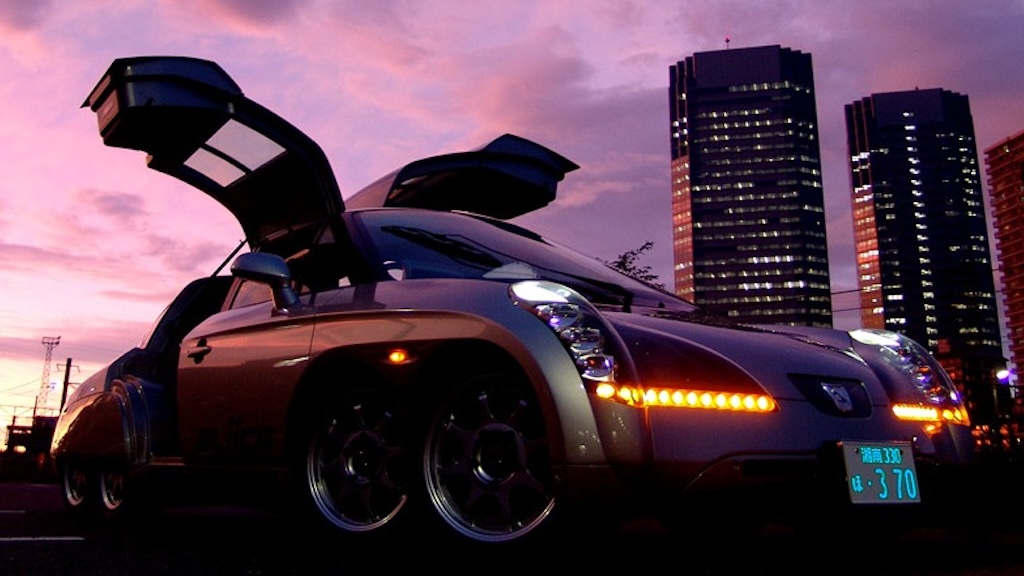
British magazine AutoExpress managed to get behind the wheel in 2004, and despite the Eliica’s odd appearance, the takeaways from the quick road test draw parallels to the performance EVs of today.
At our drive at Keio University near Tokyo, we punched the ‘D’ button on the dash, pointed the car down the road and flattened the gas pedal. With a faintly audible whirr of eight 100bhp in-wheel motors, the 0-60mph sprint was smooth, effortless, quiet – and surreal. The mind-boggling acceleration was on a par with that of a 500bhp GT racing car. Yet the lack of a transmission meant there were no jerky cog swaps as we were thrust back in our seat by an incredible 0.8Gs.
With that ultra-low centre of gravity, the car handles surprisingly well, and has virtually no body roll or nose-dive. It turns in sharply with well weighted steering through the front four wheels, and gives adequate feedback. And it does not feel as big or as heavy as its length and 2,400kg kerbweight suggest.
Surprising reports of steering feedback aside, this could easily be a driving impression of a Lucid Air, or a Kia EV6 GT, or a BMW i4 M50, just years and years in advance of all those cars.
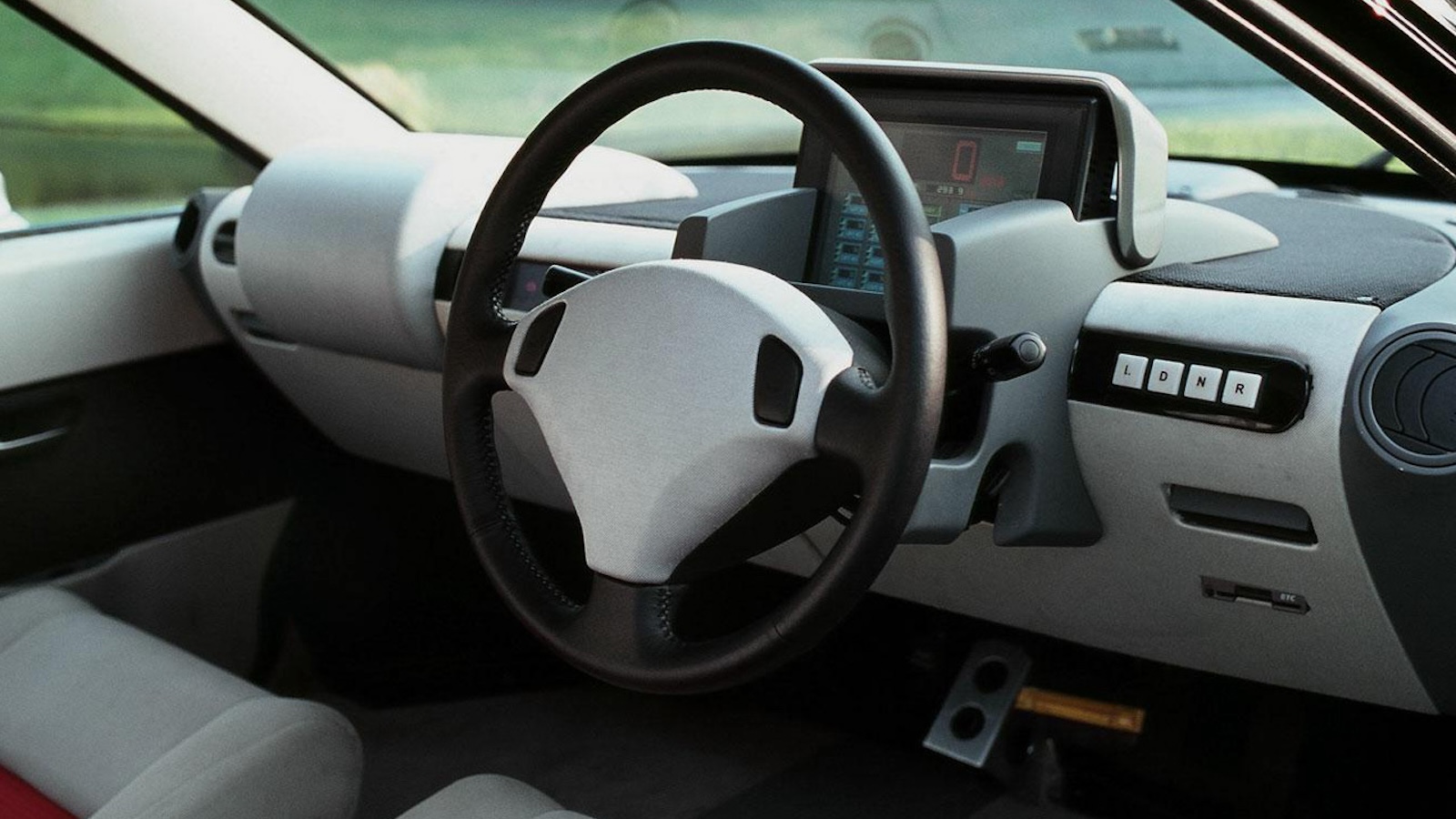
Oh, but it gets weirder. The front doors opened swan-style like on an Aston Martin DB9, but the rear doors were gullwing units. The shifter push-buttons were arranged in the exact opposite way you’d expect, and the dashboard design is a little eccentric to say the least. With a massive screen ahead of the driver and a massive bulge in front of the passenger, it looked a little like three or maybe four dashboards put together, with a self-checkout kiosk thrown in for good measure. Oh, and the seat inserts were orange, because why not.
So Very Close
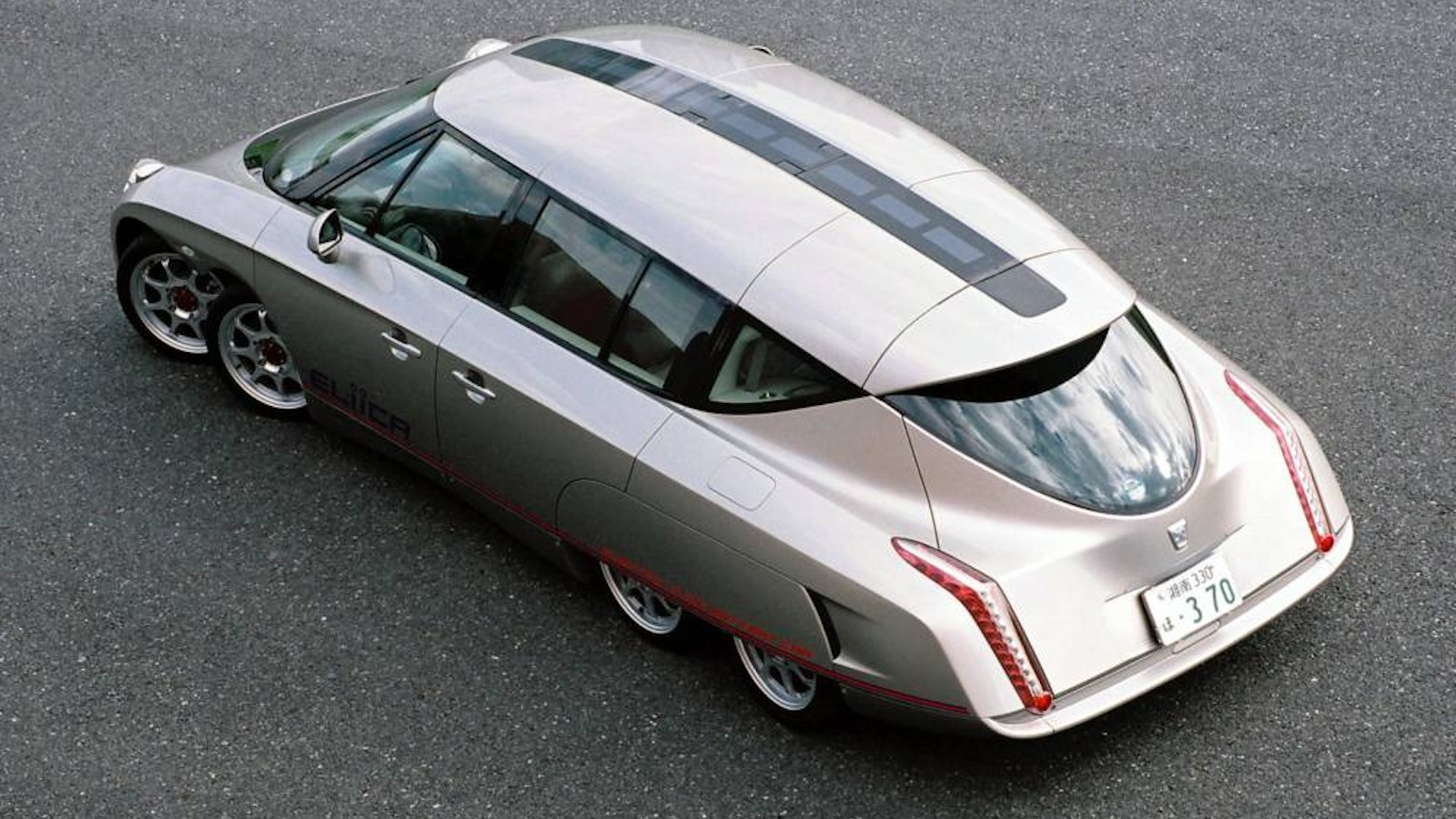
Did I mention that if people were brave enough, the Eliica would’ve made production in both long-wheelbase prototype form and a short-wheelbase form? Although Dr. Shimizu and Keio University shopped around for investors for the Eliica, nobody stepped up to the plate, likely partly because of an initial predicted price of more than $300,000. Of course, that didn’t stop former Japanese Prime Minister Junichiro Koizumi, former Governor of Tokyo Shintaro Ishihara, and Emperor Naruhito from experiencing this eight-wheeled beast.
Imagine if the electric status symbol of the 2010s wasn’t the Tesla Model S, but instead a completely and utterly batshit eight-wheeler. The world’s financial districts would’ve been so much cooler with the Eliica rolling around. Oh, what could’ve been. Still, it’s worth remembering the Eliica, not just because it was completely insane, but because it worked. It was completely different, completely functional, and deserves a hell of a lot more credit for being a modern EV pioneer. What a machine.
(Photo credits: Keio University)
Support our mission of championing car culture by becoming an Official Autopian Member.

Got a hot tip? Send it to us here. Or check out the stories on our homepage.
